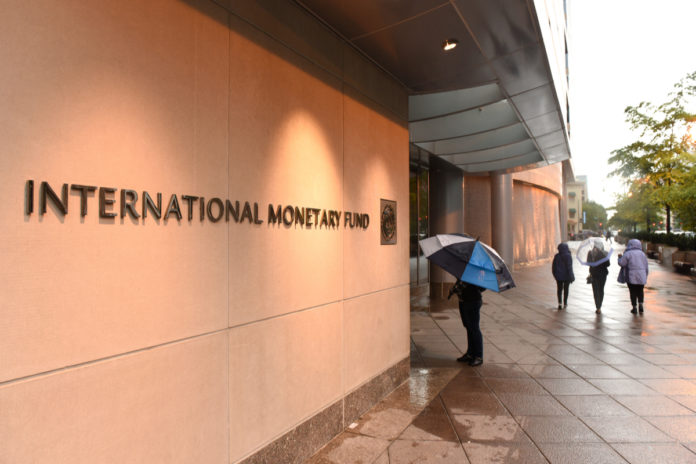(Bloomberg) — The International Monetary Fund predicted the world economy will strengthen in 2020, albeit at a slightly weaker pace than previously anticipated amid threats related to trade and tensions in the Middle East.
Global growth will accelerate this year to 3.3% from 2.9% in 2019, the fund said on Monday. That’s the first pickup in three years, but less than the 3.4% projected in October. The 2019 estimate was reduced for a sixth time.
The report, however, contained some modest hope, noting that risks are “less skewed” toward negative outcomes. That outlook will be keenly discussed this week at the World Economic Forum’s annual meeting in Davos, Switzerland. The sense that global growth is stabilizing is shared by many economists, as well as some central banks.
For the IMF, which sees growth accelerating to 3.4% in 2021, the positives include signs that the slump in manufacturing and global trade is bottoming out, “intermittent” good news on U.S.-China trade talks and accommodative monetary policy.
It upgraded China’s outlook on the back of the phase one deal with the U.S., but Chief Economist Gita Gopinath said the key thing is for both countries to push on and come up with a more durable agreement.
“If these tensions return, that will undo all of the improvements in policy uncertainty that we’ve seen recently,” she told Bloomberg Television. “It’s a bit of a wait and watch.”
The Fund also quantified the impact of central banks’ efforts to shore up growth last year. It said expansion in 2019 and 2020 would be 0.5 percentage point weaker without their stimulus.
BlackRock Vice Chairman Philip Hildebrand described that effort as an “extraordinary pivot back to easier monetary policy” that will help growth edge up this year.
Read More: Welcome to ‘Peak Decade,’ From Globalization to Central Banks
The big drag on the new IMF forecasts was India, where the 2020 outlook was slashed by more than a percentage point. There were also very modest downgrades to projections for the U.S. and the euro area. The prediction for global trade volume growth was cut to 2.9% from 3.2%, though that would still be far better than last year’s 1%.
There’s also a clear impact from the U.S.-China trade pact. According to the IMF, it reduces the cumulative negative effect on output from the battle through 2020 to 0.5% from 0.8%.
While risks have eased, the IMF was clear that that there’s still plenty to worry about. Progress in trade talks is stop-start, simmering U.S.-Iran tensions could hit oil supply, and there’s also social unrest and weather-related disasters.
“The risk of protracted subpar global growth remains tangible despite tentative signs of stabilizing momentum,” it said.
Other Forecasts
- The fund held or reduced its estimates for most of the world’s biggest economies for 2020, with Japan a notable exception. It raised the outlook to 0.7% from 0.5%, reflecting the anticipated boost from stimulus measures undertaken in December.
- The fund raised China’s estimate by 0.2 percentage point to 6%. The phase one trade deal is likely to alleviate near-term cyclical weakness, though unresolved disputes on broader U.S.-China economic relations “will continue weighing on activity.”
- The 2020 estimate for the U.S. was lowered by 0.1 percentage point to 2%, and 2021 held at 1.7%.
- India’s downgrade was because domestic demand has slowed more sharply than expected amid stress in the non-bank financial sector and a decline in credit growth, the fund said.
–With assistance from Zoe Schneeweiss, Catherine Bosley, Francine Lacqua and Haslinda Amin.






